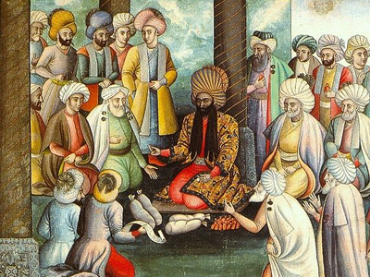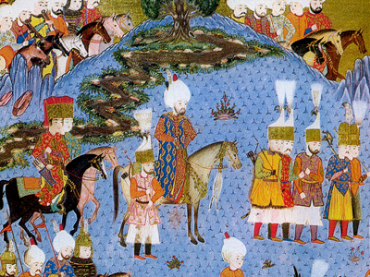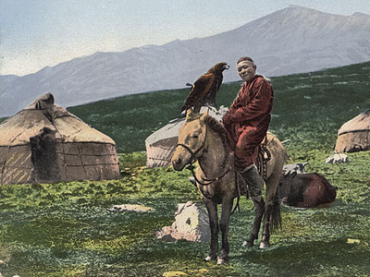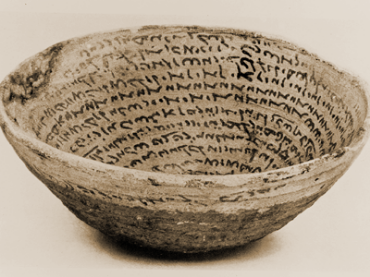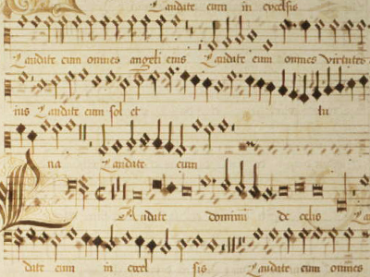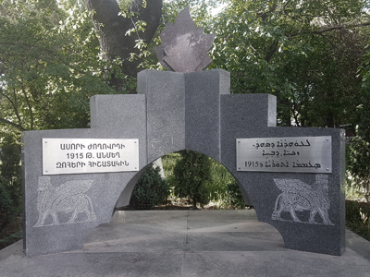History
Essays on the Early Period of the French Revolution
ISBN: 978-1-61719-410-8
Eight essays from the Quarterly Review, reprinted with additions and corrections, by the celebrated Tory diarist. They form a picture of the Revolution through the fall of Robespierre, from Croker's viewpoint
$171.00
Paris in 1789-94
Farewell Letters of Victims of the Guillotine
ISBN: 978-1-61719-411-5
As the preface says, this is not a history of the Revolution, but a picture of life in Paris under it.
$222.00
The Life of Cesare Borgia
A History and Some Criticisms
ISBN: 978-1-61719-412-2
The celebrated historical novelist writes a life of Cesare Borgia and his family - and a case for the defense, in an age in which it was customary to draw the Borgias as devils incarnate.
$207.00
Charles de Sainte-Marthe
1512-1555
ISBN: 978-1-61719-413-9
The life of a sixteenth-century French intellectual, poet, Protestant, and orator, with extensive discussion of his works in French and Latin
$194.00
Inscriptions sémitiques de la Syrie, de la Mésopotamie et de la région de Mossoul
Edited and Translated by Henri Pognon
Series: Syriac Studies Library 166
ISBN: 978-1-61719-418-4
This impressive volume is a collection of inscriptions, mostly Syriac, but also two in Akkadian and some in Aramaic, collected by Pognon during travels in the Middle East. They are accompanied with detailed notes and French translations.
$185.00
The Chronicle
With the two Continuations: Comprising Annals of English History, from the Departure of the Romans to the Reign of Edward I
By Florence of Worcester; Translation and Introduction by Thomas Forester
Series: Kiraz Chronicles Archive 35
ISBN: 978-1-61719-424-5
The monk Florentius of Worcester compiled several chronicles and other sources, here translated into English. It is an independent source for Anglo-Saxon history, and a contemporary source for the Normans.
$213.00
English Essays from a French Pen
ISBN: 978-1-61719-426-9
Five essays by a French historian of medieval England: on an abbot's advice, an ambassador's report, the life of Scarron, a traveller's diary, and a report on Voltaire.
$82.00
Der Ketzer-Katalog des Bischofs Maruta von Maipherkat
Translation and Introduction by Adolf Harnack
Series: Analecta Gorgiana 601
ISBN: 978-1-61719-432-0
This short catalogue lists the heresies known on the Syrian frontier of the Roman Empire in the beginning of the fifth century.
$34.00
Der Vorwurf des Atheismus in den drei ersten Jahrhunderten
Series: Analecta Gorgiana 604
ISBN: 978-1-61719-435-1
This study is of the concept of atheotes ("godless") in antiquity in relation to Christianity.
$34.00
Nonnenspiegel und Mönchenspiegel
By Evagrius Ponticus; Edited by Hugo Grossmann
Series: Analecta Gorgiana 606
ISBN: 978-1-61719-438-2
Poems of advice to monks and nuns from one of the first monks to write, in the late fourth century.
$36.00
The Syrian Voice
al-ṣawt al-suryānī
Series: Abrohom Nuro Library 6
ISBN: 978-1-61719-451-1
This book speaks of the internal struggle that arose within the Syrian Orthodox Church in the twentieth century.
$52.00
The Crusades in Syrian Monuments
al-ḥurūb al-ṣalībiyya fī al-āthār al-suryāniyya
Series: Abrohom Nuro Library 8
ISBN: 978-1-61719-453-5
An account of the Crusades from the Syrian perspective as detailed by the priest Isaac Armala. A non-Western account of the epic battle perfect for students of history.
$92.00
Patriarchs of the Syrian Orthodox Church in the Nineteenth Century
baṭārikat al-suryān fī āl-qarn āl-tāsi` `ashr
Series: Abrohom Nuro Library 11
ISBN: 978-1-61719-456-6
A history of the Syrian Orthodox Patriarchs of the nineteenth century as they struggle against political, internal, and external opposition.
$112.00
Spot Light on the Decision to Grant Cultural Rights to Syriac Speaking Citizens of Iraq
'aḍwā' `alā qarār manḥ al-ḥuqūq al-thaqāfiyya lil-muwāṭinīn al-nāṭiqīn bil-suryāniyya
Compiled by Jamil Raphael & Abd- al- Ahad Benyameen
Series: Abrohom Nuro Library 19
ISBN: 978-1-61719-464-1
This is a book filled with documents, details and glimpses of Syria after its government granted cultural rights to its Syriac speaking citizens.
$120.00
A Brief History on its Origins, Principals, and its Most Prominent Teachers
madrasat nuṣaybīn al-shahīra: nabdha tārīkhiyya fī ’aṣlihā wa-qawānīnihā wa-fī al-`ulamā’ al-ladhīna qāmū fīhā
By Addai Scher
Series: Abrohom Nuro Library 20
ISBN: 978-1-61719-465-8
This is a brief history of the life of the School of Nisibis, its teachings, traditions, and influence.
$46.00
Acta Sanctorum Confessorum Guriae et Shamonae Exarata Syriaca Lingua a Theophilo Edesseno
The Acts of Guria and Shmona in Syriac, with Latin Translation
Edited and Translated by Ignatius Ephraem II Rahmani
Series: Analecta Gorgiana 666
ISBN: 978-1-61719-616-4
Rahmani here presents the first edition of the martyrdom stories of Guria and Shmona in Syriac, who were killed during the Diocletian persecution. The editor also gives a Latin translation and discusses historical and textual matters in the introduction.
$49.00
Technologies of Medieval Song
The Lawrence J. Schoenberg Symposium on Manuscript Studies in the Digital Age; 2010 Symposium
Edited by Lynn Ransom & Emma Dillon
ISBN: 978-1-61719-056-8
This volume gathers six essays from papers presented at the 3rd Annual Lawrence J. Schoenberg Symposium on November 19-20, 2010. The essays explore both the technology of inscribed musical expression in the Middle Ages—especially in regard to notation—and the role that modern digital technologies play in facilitating the study of music manuscripts today. As the manuscript evidence shows, medieval music as written text was both expressive and prescriptive in shaping music-making practices, performance, and reception.
$127.00
The Way of the Sevenfold Secret
By Lilias Trotter; Introduction by Mark Beaumont
Series: Exploring the House of Islam: Perceptions of Islam in the Period of Western Ascendancy 1800-1945 7
ISBN: 978-1-61719-942-4
Lilias Trotter moved from England to Algiers in 1888, at the age of 35, and died there in 1928. In the latter stages of her mission there, she wrote specifically for Muslims influenced by mysticism. Lilias based The Way of the Sevenfold Secret on Christ’s seven ‘I am’ sayings in John’s gospel, and attempted to link them to the traditional seven steps taken by members of Sufi orders in their quest for union with God. This republication should enable readers to capture the essence of a woman whose legacy is vitally alive for our times.
$165.00
The Cradle of Islam
Studies in the Geography, People, and Politics of the Peninsula with an account of Islam and Mission-work
By Samuel Marinus Zwemer; Introduction by James S. Dennis
ISBN: 978-1-61719-638-6
This book describes the Arabian peninsula on the eve of the First World War.
$226.00
Consolidation
An Address Delivered before the Annual Meeting of the English Church Union on June 1st, 1897
Series: Analecta Gorgiana 687
ISBN: 978-1-61719-641-6
The High Church position, as of the Diamond Jubilee: after much turbulence and political interference, can the Bishops, advised by liturgists, reach a Victorian Settlement of the ceremonies of the Church of England?
$32.00
Die Akten der edessenischen Bekenner Gurjas Samonas und Abibos
Edited and Translated by Oscar von Gebhardt; Edited by Ernst von Döbschutz
ISBN: 978-1-61719-650-8
This book presents parallel texts of the Acts of the Three Martyrs of Edessa; the Syriac text is translated into German, Greek, and Latin.
$165.00
Life and Manners in Madrid
1750-1800
ISBN: 978-1-61719-654-6
This work provides a glimpse of life in eighteenth century Madrid.
$162.00
Life in the Middle Ages
Translated and Annotated by G. G & Coulton
ISBN: 978-1-61719-655-3
This collection contains several hundred vivid literary pieces from the High and Later Middle Ages.
$289.00
Tapestry
The Mirror of Civilization
ISBN: 978-1-61719-656-0
A history of tapestry from its Egyptian origins up to the author’s day.
$218.00
L'Hellénisme et l'Apôtre Paul
By C. Toussaint
Series: Kiraz Theological Archive 65
ISBN: 978-1-61719-663-8
This book examines Paul as a hybrid of both Jewish and early Christian traditions meeting at the crossroads of a commonly-shared Hellenistic culture.
$174.00
Filter by
Filter by price
Filter by manufacturer

